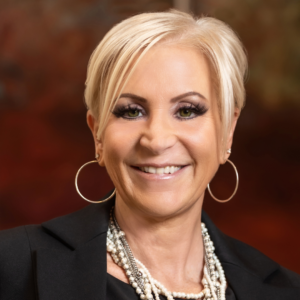What senior living can learn from Southwest’s customer service
I fly nearly every week on Southwest Airlines. I’m a Companion Level frequent flyer in its rapid rewards program, which means whenever I travel I can bring someone with me for free and receive a variety of other benefits that improve my quality of life when I travel.
Southwest uses five strategies to earn customer satisfaction and retain customer loyalty:
- Southwest makes “real” mistakes a rare occurrence.
- The company handles mistake and challenges beyond its control with the same goal of fixing them quickly and making the traveler happy.
- Southwest’s front-line employees have the freedom and the tools to fix challenges for customers.
- Customers receive something unexpected when faced with travel issues.
- Southwest does a great job thanking customers for their loyalty.
Here’s how senior living providers can use the same strategies to improve engagement and satisfaction among customers, especially when something goes wrong.
Make mistakes a rare occurrence
An organization that strives for operational and care/service delivery excellence still makes an occasional mistake. Southwest has my firm loyalty because of their operational excellence (like on-time departures and arrivals) and value (free luggage, no change fees and low fares). I forgive the “rare” mistake as a result, and your residents, caregivers and referral sources will most likely do the same.
Plenty of studies show the correlation between objective measurements of quality such as overall Centers for Medicare & Medicaid Services 5-star ratings and excellent resident satisfaction survey results and census strength.
Fix it quickly
Customer service challenges can stem from “our fault” mistakes or factors beyond our control. The key is to handle both the same way, without making excuses. A weather delay is not something an airline can control, while a mechanical or maintenance delay is. Southwest’s employees handle both challenges in the same way, apologizing for the inconvenience and creating the best possible outcome for the customer.
Senior living can use the same approach:
- Apologize whether it’s a “real” mistake or something out of your control
- Understand the customer’s perception of the problem, its impact on them and the situation
- Offer a solution that works best for the customer
Empower the front-line employees
In 90 percent of situations where Southwest had to help me with a customer service problem, the front-line employees (ticket counter reps, gate agents and flight attendants) were empowered to provide the solution immediately without help from their managers. Senior loving administrators also should create a culture where front-line team members can fix customer service complaints without going to a manager, department head or to you. Every time a customer has to wait for someone else to solve the problem, frustration will increase.
Administrators also should encourage or initiate conversations and training in advance to help team members learn how to handle problems and complaints themselves, and what to do in rare instances where a problem needs to be elevated to another team member. Make sure your staff feels comfortable bringing an especially problematic issue to you, but coach them in ways they can solve most problems without waiting for your permission or approval.
With this strategy, there will be times when a front-line team member fixes a problem, but you don’t agree with the approach. It’s important for administrators and department heads to acknowledge their initiative and praise their attempt to fix the problem, while using it as an opportunity for skills-building and training on alternate ways to handle complaints.
Team members also need training in what not to do or say. In emotionally charged situations, it’s easy for team members to fall back on certain responses that can be damaging to the customer’s interpretation of the situation and their loyalty to your community.
Things front-line staff should avoid:
- Don’t get angry with the customer for the frustrated behavior that results from a complaint. Try to put yourself in the customer shoes.
- Don’t make excuses. The most damaging excuse team members use is: “We’re understaffed!”
- Don’t dismiss the family’s complaints because they are “crazy” or have unrealistic expectations. This absolves the team from responsibility for fixing the problem because it is “unfixable.” Avoid this behavior at all costs.
Provide the unexpected
On numerous occasions I have received from a Southwest employee a “Luv Voucher” to compensate me for my travel challenges even when it was something out of their control. I am always appreciative of these efforts. I am even happier when I don’t expect it. Southwest isn’t the only company that does this.
Consider giving families who have complaints a gift card to a restaurant or send flowers to their home as an apology. If the resident is paying privately, give them a discount on their next bill commensurate with the severity of the customer service challenge they have experienced. Even a small nicety like offering to get the family a drink, snack or a meal from the kitchen could make a difference. Trust me, I do appreciate it when Southwest gives me a free drink when a flight is late.
By the way, providers don’t need to wait for a customer service complaint to offer families small niceties. Provide a “welcome basket,” offer free newspapers for residents (and caregivers/visitors), provide a small fridge for families and stock it with water or juice. Here’s another example: Hampton Inn, a Hilton Hotel brand, offers free afternoon cookies and newspapers for travelers.
Say thank you
Consider this: A first-time patient who is admitted to your sub-acute rehab center is very likely to need those services and perhaps even long-term care services at some point in the future. Medicare Home Care providers also experience multiple admissions from the same patient. Assisted living, independent living, hospice and adult day care providers may not experience multiple admissions from the same individuals, but could become a resource for multiple members of the same family.
Focus on how to develop customer loyalty from the initial experience with a new patient. Great care plus small niceties are a proven way to start a long-term relationship with a patient and family.
You may not be able to create a program to incentivize Medicare/Medicaid patients to return, but you can do small things that make a resident’s stay memorable and keep the individual and family connected to you after discharge. Here are some ideas:
- Follow up. One of my sub-acute clients has a nurse navigator program that calls discharged patients once a week for 90 days to check in and see how they are doing and make sure they keep their appointments.
- Create educational and social events for discharged patients and their families to attend, which helps them stay connected to your facility.
- Create value-based resources for existing and former residents that helps them and their families manage their caregiving experience.
- Foster social connections. One of my clients created an “adopt a paw-paw” (grandparent) program to enhance their relationship with existing residents and their families.
Quality and census/revenue are directly related. Create a high quality customer experience and you’ll experience greater census.
Luke Fannon is founder and CEO of Premier Coaching & Training, Unionville, Pa., which provides sales training, marketing team coaching and strategic consulting services to providers in the long-term care industry. For more information, visit www.pctmarketing.com.

Luke Fannon is founder and CEO of Premier Coaching & Training, Unionville, Pa., which provides sales training, marketing team coaching and strategic consulting services to providers in the long-term care industry. For more information, visit www.pctmarketing.com.
Related Articles
Topics: Business Marketing Including Social Media and CRM , Executive Leadership











